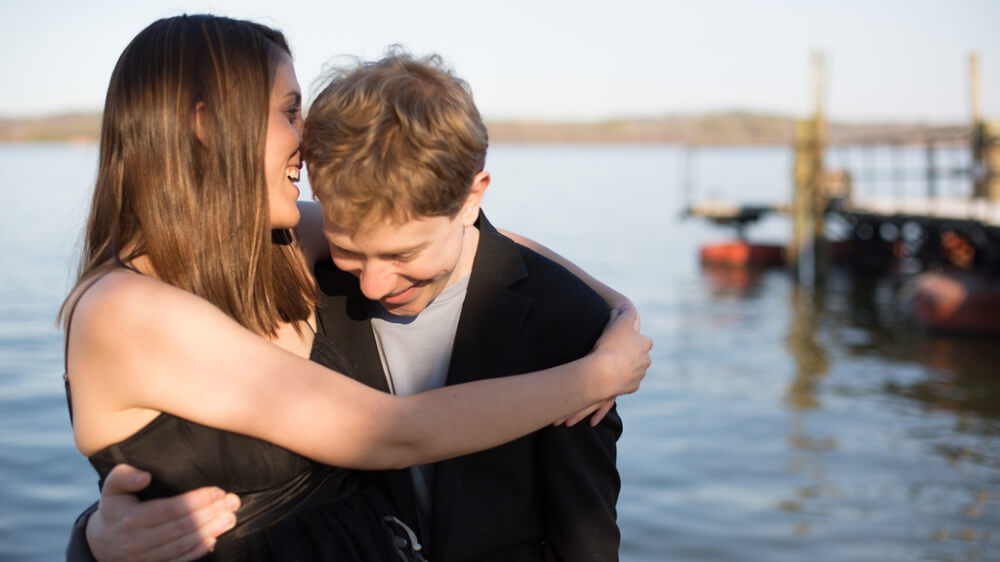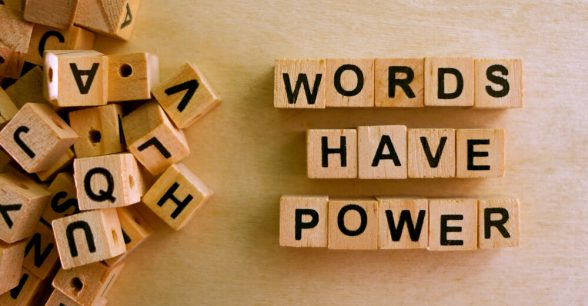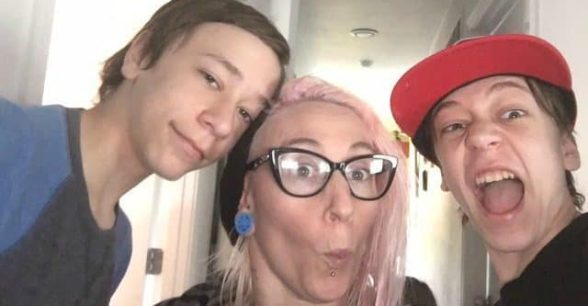Sundance TV’s “This Close” Strengthened My Marriage
“You have to learn to cue,” I gruffly tell my husband after backing our car into a spot outside my nephew’s birthday party at a noisy, monster-themed sports facility.
I am referring to Cued Speech, a visual communication mode made up of handshapes, hand placements, and movements that convey spoken language. It’s one of several modalities that I, as a deaf woman, use to communicate with hearing and deaf people; I also use my residual hearing, my hearing aids, and speech, as I was in this moment.
“I did!” my husband, who is hearing, says. “You have to help me practice by reminding me.”
Taken aback by his demand that I help him become better at supporting me in hearing environments, I unclick my seatbelt, open the door, and shut it a bit harder than I mean to, stomping off.
A few minutes later, still miffed, but sobered, I send my husband a text: “Hey. I’m sorry. I didn’t mean to hurt your feelings. I love you.”
“It’s okay,” he responds. “I love you too. And I can understand your feelings.”
Why, five years into our marriage, were we arguing about my communication needs? After watching “This Close,” the only existing television series created by and starring deaf actors and writers Shoshannah Stern and Josh Feldman, I had a come-to-Jesus realization that much of my day-to-day anxiety comes from choosing to navigate mostly hearing environments, which pose a range of communication barriers for a deaf person like me.
At the heart of this show, whose second season is now streaming on Sundance TV, is the central question of how to be deaf in a world where hearing culture threatens to alienate Kate, a public relations professional played by Stern, and Michael, a graphic novelist played by Feldman. I’m most like Kate, so I’ll focus on her: she is a straight white woman who communicates through a combination of speaking verbally, lipreading, wearing hearing aids, and signing, depending on the person she’s with.
The first season focuses on Kate’s relationship to a hearing man, her boyfriend Danny, which mirrors my own relationship to some extent. Like me and my husband, Kate and Danny mainly communicate verbally with each other, which works for them in quiet, one-on-one situations, such as at home. However, in noisier situations where Kate and Danny are with a group of hearing people, Kate faces communication barriers that isolate her from the people around her—including her boyfriend.
“Danny’s signing hasn’t really improved,” signs Michael’s culturally Deaf mother (played by Marlee Matlin) privately to Kate during a Thanksgiving dinner at Kate’s and Danny’s home.
“I know,” Kate responds. “I feel like it’s my fault. Growing up in a hearing family, no one signed except my dad. Maybe I’m used to that.”
“Things can change. But the fit doesn’t. The fit has to be there from the start. It’s important.”
I relate well to what Kate feels here, having grown up in a hearing family where most people speak verbally, and where I still struggle to speak up for myself, despite my family being more inclusive than most. (In addition to cued speech, my family also uses sign language to communicate with me.)
But there’s another, equally important aspect of hearing-deaf relationships illuminated by this episode: Kate isn’t the only one at risk of alienation. Throughout the episode, we see Danny alienated by the same Deaf cultural norms and language that meaningfully connects Kate to Michael and his family.
As Michael’s mother says: the fit must be there.
The lesson within the aforementioned scene and the show as a whole is that barriers to connection can be overcome where love is a driving force. When my husband and I were arguing, we were about to enter an environment full of hearing adults and children in a noisy, dark environment rife with anxiety-inducing communication barriers. My husband, who is hypersensitive to noises, wasn’t that comfortable with the situation we were about to enter, either. Entering an environment where neither of us would feel at home in our bodies threatened to alienate us both. Yet, out of a sense of duty and love toward our family, we chose to enter it together anyway—which proves that we “fit,” despite the systemic barriers everyday life puts in our way.
This Close’s sharp commentary on relationships also demonstrates the necessity of disability representation in film and the arts in general. It’s not just entertaining; shows like these have the potential to bring people who are experientially unlike each other closer together. For my husband and I, it has sparked an ongoing conversation about how to better serve each other—a conversation that intensifies the love that we feel for each other. Instead of accepting that we are “this close” to alienation from each other in certain situations, such as family gatherings, we are now working on minding that gap—and actively closing it. This type of conversation is, I believe, the kind that This Close encourages.
For his part, my husband has promised to practice, on his own time, cued speech and sign language—and to continue to pay attention to me and my needs when we’re in hearing environments. For my part, I have promised to work on teaching him cued speech and sign language whenever the time is right, advocating for myself unabashedly when we’re with hearing family and friends, and opting out when I need to. It isn’t always an easy negotiation between each other and our relationship vis-à-vis the environments we find ourselves in—but he’s worth it, I’m worth it, and our marriage is worth it.
About Rooted In Rights
Rooted in Rights exists to amplify the perspectives of the disability community. Blog posts and storyteller videos that we publish and content we re-share on social media do not necessarily reflect the opinions or values of Rooted in Rights nor indicate an endorsement of a program or service by Rooted in Rights. We respect and aim to reflect the diversity of opinions and experiences of the disability community. Rooted in Rights seeks to highlight discussions, not direct them. Learn more about Rooted In Rights




That’s very true
Another insightful and thoughtful perspective, thanks for sharing it Sarah!